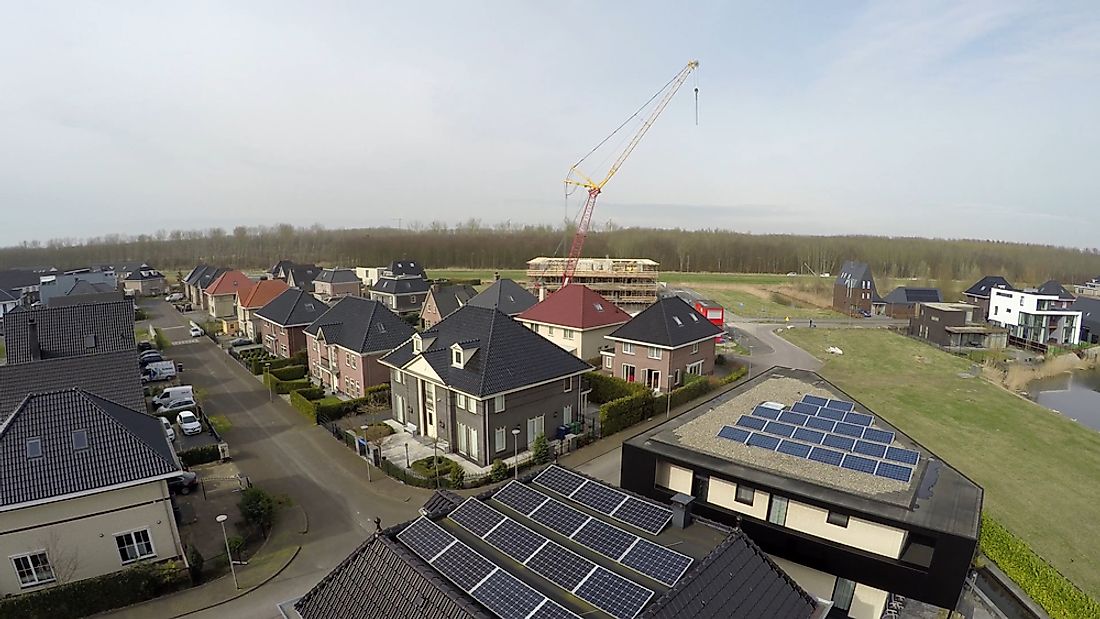14 EU Member States With The Lowest Renewable Energy Rates

The European Union is a global leader in investments in renewable energy sources, and as such many of its constituent countries have some of the highest renewable energy rates in the world. France, Greece, the Czech Republic, and Germany have the highest rates of renewable energy in the EU. However, some countries fall behind in renewable energy rates, and their future targets are below the EU’s target by 2020. The worst performing countries in the European Union with regards to renewable energy rates are Luxembourg, the Netherlands, Malta, and Belgium.
14 EU Member States With The Lowest Renewable Energy Rates
Luxembourg
Luxembourg has the lowest forecasted renewable energy rates in the EU, projected to account for 11% of the country’s energy in 2020. The country is energy deficient and has to source some of its energy from external markets. Currently, renewable energy accounts for an estimated 5.4% of the country’s energy, the lowest percentage of any EU member state. As a result, Luxembourg has one of the highest carbon emissions in Europe, estimated to be 22.4 tons of carbon dioxide emissions in 2007. In comparison, the EU CO2 emission that year averaged at 7.9 tons. Hydropower, biomass, and wind are the primary renewable energy sources in Luxembourg.
The Netherlands
Biomass, solar and wind power are the primary sources of renewable energy in the Netherlands. In 2016, about 6.0% of Netherlands’ energy was sourced from renewable sources, the second-lowest rate of any country in the EU. At this rate, the country is forecasted to have 14% of its energy being attributed to renewable sources. Despite the country making huge investments in renewable energy, the Netherlands is set on missing the EU target in 2020. Nonetheless, the Netherlands is aiming at having renewable energy sources accounting for 50% of the country’s annual electricity demand by 2025. One area the Netherlands has invested in is wind energy, with the wind power capacity in the country reaching 3,431 MW in 2015.
Malta
Malta has the third-lowest renewable energy rate in the European Union, with renewable energy accounting for 6.0% of the country’s energy in 2016. Malta has set a minimum threshold of having 10% of its energy be sourced from renewables by 2020. The country has a natural advantage of solar power production, as its location in the Mediterranean experiencing among Europe’s highest annual solar hours. Solar power does make up the majority of the country’s renewable energy, but the country has to triple its current solar capacity if it is to meet the EU target by 2020. Other renewable energy alternatives are not viable in the island nation primarily due to the country’s small size. An onshore wind power project was dismissed as it could interfere with air traffic in the country’s international airport.
The EU’s Highest Renewable Energy Rate
In contrast, France has the highest renewable energy rate of any EU member state. 16% of the energy in France comes from renewable sources, the highest percentage in the EU. The country is, however, working on attaining its 2020 objective of having the percentage standing at 23%. Some of the primary renewable energy sources include hydropower, solar, and wind power. France is also home to the world’s oldest tidal power production facility, which was the world’s largest between 1966 and 2011.
14 EU Member States With The Lowest Renewable Energy Rates
| Rank | Country | % of Energy from Renewable Sources (2016) | Target % of Energy from Renewable Sources (2020) |
|---|---|---|---|
| 1 | France | 16.0 | 23 |
| 2 | Greece | 15.2 | 18 |
| 3 | Czech Republic | 14.9 | 13 |
| 4 | Germany | 14.8 | 18 |
| 5 | Hungary | 14.2 | 13 |
| 6 | Slovakia | 12 | 14 |
| 7 | Poland | 11.3 | 15 |
| 8 | Ireland | 9.5 | 16 |
| 9 | Cyprus | 9.3 | 13 |
| 10 | United Kingdom | 9.3 | 15 |
| 11 | Belgium | 8.7 | 13 |
| 12 | Malta | 6.0 | 10 |
| 13 | Netherlands | 6.0 | 14 |
| 14 | Luxembourg | 5.4 | 11 |











